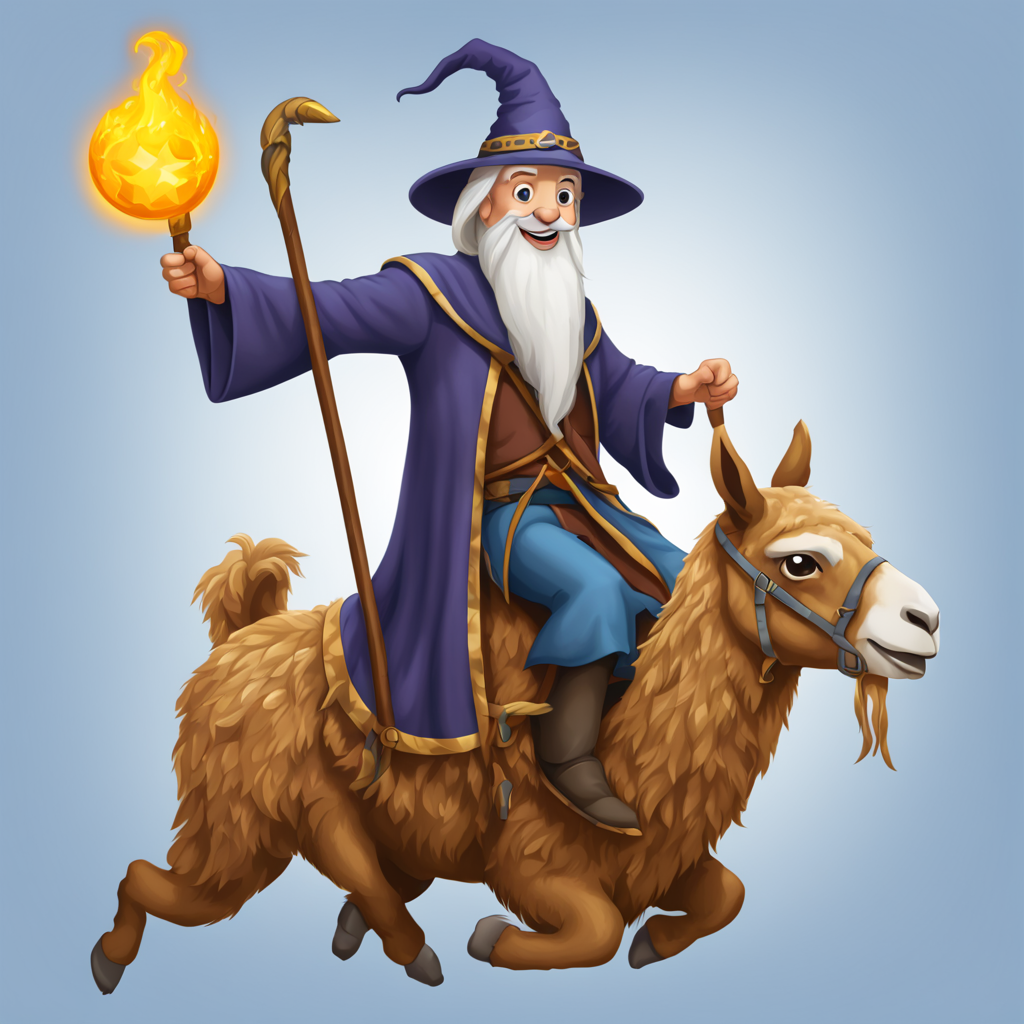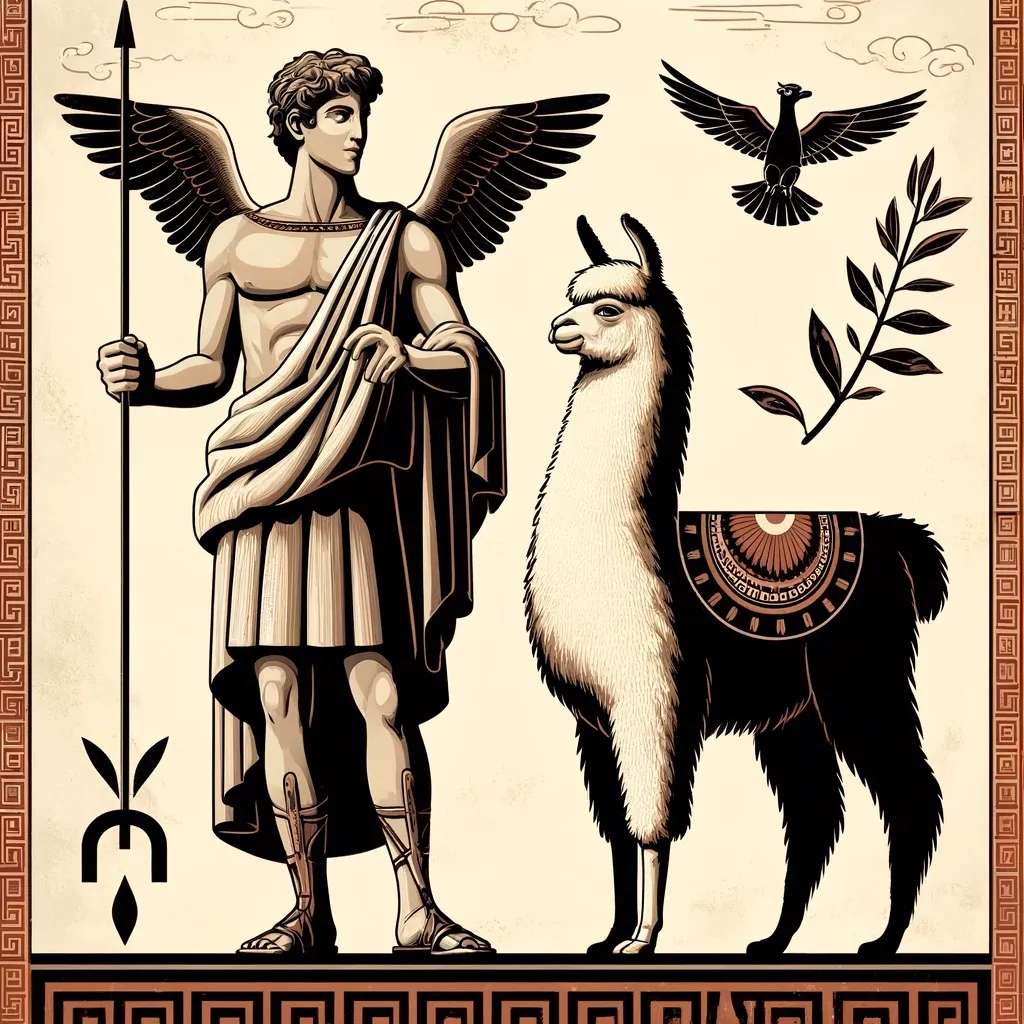nous-hermes-llama2-awq
Maintainer: nateraw

7
⚙️
| Property | Value |
|---|---|
| Run this model | Run on Replicate |
| API spec | View on Replicate |
| Github link | View on Github |
| Paper link | No paper link provided |
Create account to get full access
Model overview
nous-hermes-llama2-awq is a language model based on the Llama 2 architecture, developed by nateraw. It is a "vLLM" (virtualized Large Language Model) version of the Nous Hermes Llama2-AWQ model, providing an open source and customizable interface for using the model.
The model is similar to other Llama-based models like the llama-2-7b, nous-hermes-2-solar-10.7b, meta-llama-3-70b, and goliath-120b, which are large language models with a range of capabilities.
Model inputs and outputs
The nous-hermes-llama2-awq model takes a prompt as input and generates text as output. The prompt is used to guide the model's generation, and the model outputs a sequence of text based on the prompt.
Inputs
- Prompt: The text that is used to initiate the model's generation.
- Top K: The number of highest probability tokens to consider for generating the output.
- Top P: A probability threshold for generating the output, where only the top tokens with cumulative probability above this threshold are considered.
- Temperature: A value used to modulate the next token probabilities, controlling the creativity and randomness of the output.
- Max New Tokens: The maximum number of tokens the model should generate as output.
- Prompt Template: A template used to format the prompt, with a
{prompt}placeholder for the input prompt. - Presence Penalty: A penalty applied to tokens that have already appeared in the output, to encourage diversity.
- Frequency Penalty: A penalty applied to tokens based on their frequency in the output, to discourage repetition.
Outputs
- The model outputs a sequence of text, with each element in the output array representing a generated token.
Capabilities
The nous-hermes-llama2-awq model is a powerful language model capable of generating human-like text across a wide range of domains. It can be used for tasks such as text generation, dialogue, and summarization, among others. The model's performance can be fine-tuned for specific use cases by adjusting the input parameters.
What can I use it for?
The nous-hermes-llama2-awq model can be useful for a variety of applications, such as:
- Content Generation: Generating articles, stories, or other textual content. The model's ability to generate coherent and contextual text can be leveraged for tasks like creative writing, blog post generation, and more.
- Dialogue Systems: Building chatbots and virtual assistants that can engage in natural conversations. The model's language understanding and generation capabilities make it well-suited for this task.
- Summarization: Automatically summarizing long-form text, such as news articles or research papers, to extract the key points.
- Question Answering: Providing answers to questions based on the provided prompt and the model's knowledge.
Things to try
Some interesting things to try with the nous-hermes-llama2-awq model include:
- Experimenting with different prompt templates and input parameters to see how they affect the model's output.
- Trying the model on a variety of tasks, such as generating product descriptions, writing poetry, or answering open-ended questions, to explore its versatility.
- Comparing the model's performance to other similar language models, such as the ones mentioned in the "Model overview" section, to understand its relative strengths and weaknesses.
This summary was produced with help from an AI and may contain inaccuracies - check out the links to read the original source documents!
Related Models

wizard-mega-13b-awq

5
wizard-mega-13b-awq is a large language model (LLM) developed by nateraw that has been quantized using Adaptive Weight Quantization (AWQ) and served with vLLM. It is similar in capabilities to other LLMs like nous-hermes-llama2-awq, wizardlm-2-8x22b, and whisper-large-v3. These models can be used for a variety of language-based tasks such as text generation, question answering, and language translation. Model inputs and outputs wizard-mega-13b-awq takes in a text prompt and generates additional text based on that prompt. The model allows you to control various parameters like the "top k" and "top p" values, temperature, and the maximum number of new tokens to generate. The output is a string of generated text. Inputs message**: The text prompt to be used as input for the model. max_new_tokens**: The maximum number of tokens the model should generate as output. temperature**: The value used to modulate the next token probabilities. top_p**: A probability threshold for generating the output. If = top_p (nucleus filtering). top_k**: The number of highest probability tokens to consider for generating the output. If > 0, only keep the top k tokens with highest probability (top-k filtering). presence_penalty**: The presence penalty. Outputs Output**: The generated text output from the model. Capabilities wizard-mega-13b-awq is a powerful language model that can be used for a variety of tasks. It can generate coherent and contextually-appropriate text, answer questions, and even engage in open-ended conversations. The model has been trained on a vast amount of text data, giving it a broad knowledge base that it can draw upon. What can I use it for? wizard-mega-13b-awq can be used for a wide range of applications, such as: Content generation**: The model can be used to generate articles, stories, or other types of written content. Chatbots and virtual assistants**: The model can be used to power conversational AI agents that can engage in natural language interactions. Language translation**: The model can be fine-tuned for translation tasks, allowing it to translate text between different languages. Question answering**: The model can be used to answer questions on a variety of topics, drawing upon its broad knowledge base. Things to try One interesting thing to try with wizard-mega-13b-awq is to experiment with the different input parameters, such as temperature and top-k/top-p values. Adjusting these can result in significantly different output styles, from more creative and diverse to more conservative and coherent. You can also try prompting the model with open-ended questions or tasks and see how it responds, as this can reveal interesting insights about its capabilities and limitations.
Updated Invalid Date

hermes-2-theta-llama-8b

2
Hermes-2-Theta-Llama-8B is the first experimental merged model released by Nous Research, in collaboration with Charles Goddard at Arcee, the team behind MergeKit. It is a merged and further reinforcement learned model that combines the capabilities of Nous Research's excellent Hermes 2 Pro model and Meta's Llama-3 Instruct model. This model aims to deliver the best of both worlds, leveraging the strengths of each to create a more capable and versatile AI assistant. Similar models include Hermes-2-Theta-Llama-3-8B, Hermes-2-Theta-Llama-3-8B-GGUF, nous-hermes-llama2-awq, nous-hermes-2-solar-10.7b, and nous-hermes-2-yi-34b-gguf. Model Inputs and Outputs Hermes-2-Theta-Llama-8B takes a variety of inputs to control the text generation process, including: Inputs Prompt**: The starting text for the model to continue. Top K**: The number of most likely tokens to sample from during decoding. Top P**: The cumulative probability threshold to use for sampling during decoding. Temperature**: A value controlling the randomness of the output. Max Tokens**: The maximum number of tokens to generate. Min Tokens**: The minimum number of tokens to generate. Stop Sequences**: A list of sequences to stop generation at. The model outputs an array of generated text. Capabilities Hermes-2-Theta-Llama-8B demonstrates strong capabilities in a variety of areas, including open-ended text generation, creative writing, and task-oriented dialogue. It can be used to generate new mythos, engage in meta-cognitive conversations, and provide structured JSON outputs in response to prompts. What Can I Use It For? With its diverse set of capabilities, Hermes-2-Theta-Llama-8B can be leveraged for a wide range of applications. Some potential use cases include: Creative Writing**: Use the model to generate new stories, poems, or imaginative narratives. Conversational AI**: Develop chat-based applications that can engage in natural, contextual dialogue. Data Extraction**: Leverage the model's ability to generate structured JSON outputs to extract information from unstructured text. Research and Experimentation**: Explore the model's capabilities and push the boundaries of what is possible with large language models. Things to Try Some interesting things to try with Hermes-2-Theta-Llama-8B include: Experimenting with different system prompts to steer the model's behavior and capabilities. Utilizing the model's function calling capabilities to integrate external data and services into the AI's responses. Exploring the model's ability to engage in meta-cognitive reasoning and self-reflective dialogue. Investigating the model's performance on specialized tasks or datasets to uncover its unique strengths and weaknesses.
Updated Invalid Date

nous-hermes-2-solar-10.7b

62
nous-hermes-2-solar-10.7b is the flagship model of Nous Research, built on the SOLAR 10.7B base model. It is a powerful language model with a wide range of capabilities. While it shares some similarities with other Nous Research models like nous-hermes-2-yi-34b-gguf, nous-hermes-2-solar-10.7b has its own unique strengths and specialized training. Model inputs and outputs nous-hermes-2-solar-10.7b is a text generation model that takes a prompt as input and generates relevant and coherent text as output. The model's inputs and outputs are detailed below: Inputs Prompt**: The text that the model will use to generate a response. Top K**: The number of highest probability tokens to consider for generating the output. Top P**: A probability threshold for generating the output, used in nucleus filtering. Temperature**: A value used to modulate the next token probabilities. Max New Tokens**: The maximum number of tokens the model should generate as output. Prompt Template**: A template used to format the prompt, with a placeholder for the input prompt. Presence Penalty**: A penalty applied to the score of tokens based on their previous occurrences in the generated text. Frequency Penalty**: A penalty applied to the score of tokens based on their overall frequency in the generated text. Outputs The model generates a list of strings as output, representing the text it has generated based on the provided input. Capabilities nous-hermes-2-solar-10.7b is a highly capable language model that can be used for a variety of tasks, such as text generation, question answering, and language understanding. It has been trained on a vast amount of data and can produce human-like responses on a wide range of topics. What can I use it for? nous-hermes-2-solar-10.7b can be used for a variety of applications, including: Content generation**: The model can be used to generate original text, such as stories, articles, or poems. Chatbots and virtual assistants**: The model's natural language processing capabilities make it well-suited for building conversational AI agents. Language understanding**: The model can be used to analyze and interpret text, such as for sentiment analysis or topic classification. Question answering**: The model can be used to answer questions on a wide range of subjects, drawing from its extensive knowledge base. Things to try There are many interesting things you can try with nous-hermes-2-solar-10.7b. For example, you could experiment with different input prompts to see how the model responds, or you could try using the model in combination with other AI tools or datasets to unlock new capabilities.
Updated Invalid Date

hermes-2-pro-llama-3-8b

4
hermes-2-pro-llama-3-8b is an updated and cleaned version of the OpenHermes 2.5 Dataset, as well as a newly introduced Function Calling and JSON Mode dataset developed by NousResearch. This model maintains excellent general task and conversation capabilities, while also excelling at Function Calling and JSON Structured Outputs. It scored 91% on the Function Calling evaluation and 84% on the Structured JSON Output evaluation. Model inputs and outputs hermes-2-pro-llama-3-8b takes in various inputs through a ChatML prompt format, including a system prompt that can provide instructions and guidance to the model. The model is capable of generating text outputs in response to user prompts, as well as executing functions and returning structured JSON responses. Inputs Prompt**: The text that the user wants the model to generate a response for. System Prompt**: An optional prompt that can be used to provide instructions or guidance to the model. Function Signatures**: When using the Function Calling mode, the model is provided with function signatures within `` XML tags. Outputs Text Generation**: The model can generate natural language responses to user prompts. Function Calls**: When in Function Calling mode, the model can return JSON objects with function names and arguments within `` XML tags. Structured JSON**: The model can also be prompted to return a JSON object response in a specific schema. Capabilities hermes-2-pro-llama-3-8b excels at general tasks and conversations, as well as more specialized capabilities like Function Calling and Structured JSON Outputs. It can assist with a wide range of applications, from creative writing to data analysis and coding tasks. What can I use it for? You can use hermes-2-pro-llama-3-8b for a variety of applications, such as: Creative Writing**: Generate short stories, plot outlines, or character descriptions. Data Analysis**: Fetch and summarize financial data, like stock fundamentals, using the Function Calling mode. Coding Assistance**: Get help with coding tasks, such as explaining concepts or generating code snippets. Structured Outputs**: Obtain responses in a specific JSON format, which can be useful for building applications that require structured data. Things to try Try prompting the model with a variety of tasks, from open-ended conversations to more specialized requests like fetching stock data or generating a detailed plot summary. Experiment with the different prompt formats, including the ChatML system prompt, to see how the model responds and how you can leverage its capabilities.
Updated Invalid Date